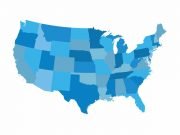The major indices each declined more than 1% last week, putting an end to the impressive streak of eight consecutive weekly gains for the NASDAQ, five for the S&P 500, and three for the Dow. Concerns about further interest-rate hikes and a decelerating global economy weighed heavily on stocks.
Unfortunately, no crystal ball can tell us which stocks will present significant price action in the coming days. With over 4,000 publicly traded companies available in The U.S., staying ahead of potential moves can prove to be a challenging task that requires hours each day devoted to market research.
To provide our readers with a competitive edge, we sort through thousands of stock ideas each week and narrow them down to three that may be primed for big price jumps in the near future.
So what are the best tickers to have on your radar now? Get the inside scoop on the top stocks to watch this week here.
PayPal Holdings Inc. (PYPL)
Unlike many fintech companies, digital payment giant Paypal is incredibly profitable. Yet its stock is down more than 80% from its July 2021 ATH, and it trades at a reasonable 29 times price to earnings, well below its historical average P/E of 50.
With e-commerce activity on the decline since the thick of the pandemic, PayPal is seeing slower growth. Unrelenting high levels of inflation have put a dent in discretionary spending, which has hurt PayPal. Still, thanks to its firm financial footing, the company has plenty of room to handle a possible prolonged economic downturn.
Despite estimates calling for roughly 20% earnings growth this year, PayPal stock trades below 16 times free cash flow and about 14 times operating cash flow, indicating that investors may be underestimating its recovery potential. Among 48 polled analysts, 33 say to Buy PYPL, and 15 call it a Hold. There are no Sell ratings for the stock. A median 12-month price target of $89.50 represents a 35% increase from the current price.
[stock_market_widget type=”accordion” template=”extended” color=”#5679FF” assets=”PYPL” start_expanded=”true” display_currency_symbol=”true” api=”yf”]
Nike Inc (NKE)
There are compelling reasons to invest in one of the most well-known sports apparel brands ever put on the market; the company I’m talking about is Nike Inc. (NKE). With solid demand on its side, NKE’s direct, wholesale, and digital sales have all grown over the years. NKE also has control over its inventory levels, which increased in line with the company’s sales. Also, a benefit for NKE is its market share expansion and its dominance over its competitors. Adidas and UnderArmour, its two biggest challengers, have faced difficulties, only solidifying Nike’s market position.
NKE’s stock is down year-to-date by 4.50%, it shows TTM revenue of $50.68 billion at $3.57 per share, and it made a same-period net income of $5.5 billion via its 10.82% profit margin. NKE has a PEG ratio of 1.88x, an ROE of 37.34%, and year-over-year revenue growth (+13.97%). For the most recent quarter, The company reported an EPS of $0.79 per share vs. the $0.55 projected by analysts (a 44.57% surprise), and it reported $12.39 billion in sales vs. the $11.48 expected (a 7.92% beat). The stock sports an annual dividend yield of 1.21% and a quarterly payout of 34 cents ($1.36/year) per share. With a free cash flow of $2.87 billion and a 10-day average volume of 9.91 million shares, NKE has a median price target of $138, with a high of $160 and a low of $95, allowing the potential for a 43% price increase.
[stock_market_widget type=”accordion” template=”extended” color=”#5679FF” assets=”NKE” start_expanded=”true” display_currency_symbol=”true” api=”yf”]
TEVA Pharmaceutical Industries LTD (TEVA)
The global leader in generic drugs, Teva Pharmaceutical, is currently trading at an undeniably low 3x forward price-to-earnings multiple. The stock is so cheaply priced right now because of its high debt load of $20.7 billion as of the end of March. But that’s down from $21.2 billion as of the end of last year. And with the company projecting up to $2.1 billion in free cash flow for 2023, it could have room to pay down more debt this year.
Teva recently announced an agreement with Johnson & Johnson that will allow it to launch its Stelara biosimilar, AVT04, in the U.S. market by Feb. 21, 2025—generating just under $10 billion in revenue for the healthcare giant last year. Stelara is a massive moneymaker for J&J and will provide consumers with a lower-priced alternative that could help accelerate Teva’s growth.
[stock_market_widget type=”accordion” template=”extended” color=”#5679FF” assets=”TEVA” start_expanded=”true” display_currency_symbol=”true” api=”yf”]












